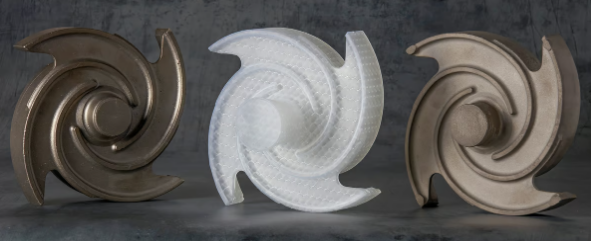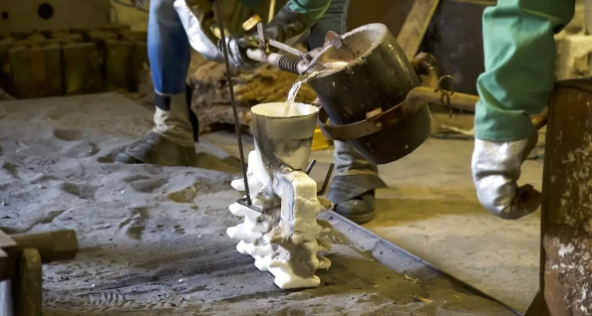Making patterns, cores and molds for cast metal is one of the traditional manufacturing processes.3D printing is ideal for replacing these processes. CNC machining is the most common industrial method for these parts. It works with a variety of plastics and metals, but using 3D printed models in a growing number of specialty molding materials provides a faster, less expensive method with the same precision.
Another reason why mold and pattern printing (rather than machining) is increasingly adopted in industries is that it can produce patterns with geometric shapes, such as internal channels and walls. thin, which are difficult or impossible to machine, or tedious secondary assembly. or milling is required to achieve the final product, such as adding a door feature.


At the University of Northern Iowa,Clear Cast Resin 3D printed models easily integrate into their existing industrial investment casting workflow (Source: Formlabs)
although3D printing has always been about precision, but advances in materials are driving greater adoption for investment casting applications.
Resin3D printer and materials maker Formlabs this week launched a new casting material called Clear Cast Resin, designed to help foundries produce molds and models more efficiently.
new typeClear Cast Resin is designed to allow foundries to cast designs in-house with minimal cost and turnaround time, with the flexibility to iterate. Formlabs claims the material is accurate to within 0.25mm, resulting in reliable cast shells with extremely low cracking rates.
One of the first companies to adopt resin was an Alabama-based investment casting company.Diversified metallurgists. John Farr, the company’s vice president of technology, said: “Clear Cast parts connect directly to the workflow. With 3D printing, I can just press a button and do something else. manual operations after casting, which can cover the cost of 3D printed models.
HASAfter Formlabs requested sample parts, Farr discovered that Form 3L and Clear Cast Resin were both reasonably priced for a small foundry like theirs and were an effective alternative to outsourced PMMA models. “They don’t need to change roasting temperatures, slurry formulations or part designs,” Formlabs said. Diversified Metalsmiths claims that using the Formlabs workflow to create the turbine model shown below in Clear Cast Resin costs just $80 in materials and labor, compared to $300 previously to outsource.


Clear cast resin models and final metal parts produced by Diversified Metalsmiths (Source: Formlabs)
Quite simply because a certain material (eg.Just because PLA melts at 400ºC does not mean it is suitable for making investment casting models. Some materials may contain additives that may leave residue or particles in the mold. Materials designed specifically for casting generally have clean combustion and low ash residue.
Formlabs has extensive experience in the production of low coefficient of thermal expansion (CTE) and clean-burning photopolymers. Its castable wax resin was intended for the jewelry industry, but its strength was too low for use in the larger, thicker, more structurally robust parts needed for industrial metalworking.
newClear Cast Resin burns in two hours at temperatures of 700°C to 900°C. It is compatible with Formlabs’ Form 3 and Form 4 SLA 3D printers and costs $149 per liter.


Formlabs Clear Cast Resin offers cartridges compatible with the company’s Form 3 and Form 4 resin 3D printers (Source: Formlabs)
Compiled source: ALL3DP
Daguang focuses on providing solutions such as precision CNC machining services (3-axis, 4-axis, 5-axis machining), CNC milling, 3D printing and rapid prototyping services.

















